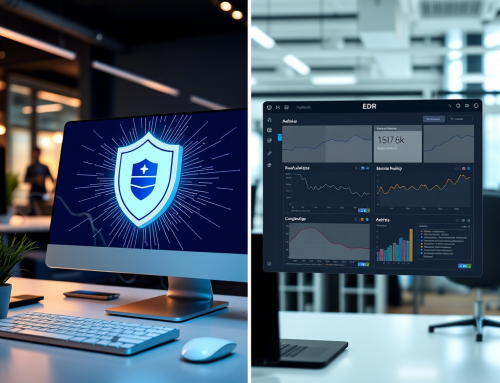When it comes to safeguarding systems and detecting threats, the right tools can make all the difference. Sysinternals, a suite of utilities developed by Microsoft, offers powerful tools for managing, troubleshooting, and securing Windows environments. Whether you’re new to cybersecurity or an experienced professional, understanding and leveraging these tools is essential. Here’s a breakdown of five key Sysinternals tools that every cybersecurity learner and professional should master, along with detailed use cases to help you get started.
1. Process Explorer
Purpose:
Process Explorer is an advanced task manager that provides deep visibility into running processes, their dependencies, and system performance.
Key Features:
- Detailed process tree view.
- Information on parent-child process relationships.
- Insights into resource usage, threads, and handles.
Use Cases:
- Identifying Malicious Processes: Detect suspicious or malicious processes by analyzing digital signatures, parent-child relationships, and unusual resource consumption.
- DLL Injection Detection: Identify injected dynamic link libraries (DLLs) that may compromise system security.
- Troubleshooting Resource Overuse: Pinpoint processes that are causing high CPU, memory, or I/O usage, helping keep systems optimized.
How Process Explorer Helps:
This tool is invaluable for spotting anomalies in your system. For example, if a process with an unverified signature or high CPU usage stands out, it may point to malware activity that requires immediate attention.
2. Autoruns
Purpose:
Autoruns provides a comprehensive view of all startup programs, services, and other auto-start entries on a system.
Key Features:
- Displays all auto-start entries, including registry entries, scheduled tasks, and services.
- Allows users to disable unnecessary or malicious startup items.
Use Cases:
- Malware Persistence Investigation: Detect unauthorized executables or scripts configured to launch at system startup. This helps identify malware designed to survive reboots.
- System Cleanup: Optimize system performance and security by disabling unnecessary or unauthorized startup entries.
How Autoruns Helps:
For cybersecurity learners, Autoruns highlights how threat actors establish persistence. Practice reviewing entries and identifying suspicious items to build your skills in analyzing potential security risks.
3. TCPView
Purpose:
TCPView simplifies real-time monitoring of active TCP/UDP connections, providing insights into which processes are communicating over the network.
Key Features:
- Live tracking of all active network connections.
- Mapping of network activity to specific processes and endpoints.
Use Cases:
- Network Threat Detection: Monitor live connections to identify unauthorized or suspicious activity, such as unexpected connections to unknown IP addresses.
- Incident Response: Determine which network connections are involved in data exfiltration attempts or command-and-control (C2) communications during an attack.
How TCPView Helps:
TCPView is critical for cybersecurity professionals focused on network security. By becoming proficient with this tool, you’ll gain the ability to track threats, analyze connections, and identify compromised endpoints quickly.
4. Sysmon (System Monitor)
Purpose:
Sysmon delivers detailed logging of system events, such as process creation, network connections, and file operations. Its high-fidelity logs are a treasure trove for advanced threat detection and forensic investigations.
Key Features:
- Tracks key system events like file creation, registry modifications, and network communication.
- Generates logs that can be fed into SIEM or other threat detection platforms.
Use Cases:
- Advanced Threat Hunting: Record detailed activity logs and analyze these to track attacker behavior, including lateral movement or privilege escalation.
- Endpoint Monitoring: Provide your SIEM tools with robust logs for correlating suspicious activities and detecting anomalies.
How Sysmon Helps:
Understanding Sysmon’s configuration is essential. For beginners, start by configuring it to log events like process creation and network activity. This hands-on practice is key to mastering threat hunting and network defense.
5. PsExec
Purpose:
PsExec is a versatile tool for executing commands or scripts on remote systems, offering cybersecurity professionals powerful remote administration capabilities.
Key Features:
- Enables control of remote systems without requiring interactive logins.
- Ideal for executing scripts and batch files at scale.
Use Cases:
- Patch Deployment: Streamline the installation of security patches across multiple systems, ensuring enterprise-wide protection against vulnerabilities.
- Incident Response: Remotely collect forensic data from compromised systems, disable malicious processes, or execute clean-up scripts.
How PsExec Helps:
For learners, mastering PsExec is invaluable for managing systems across networks. Learning to deploy patches or execute commands remotely is an essential skill for administering and securing large environments.
Why Cybersecurity Professionals Should Learn Sysinternals Tools
Sysinternals tools are an indispensable part of a cybersecurity professional’s arsenal. Here’s why:
- Enhanced Visibility: Tools like Process Explorer and Sysmon offer deep insights into system processes and behavior, enabling detailed analysis of potential threats.
- Scalability: With tools like PsExec, managing even large-scale systems becomes efficient.
- Incident Response and Forensics: Sysinternals tools are commonly used to identify threats, pinpoint vulnerabilities, and gather forensic data.
For cybersecurity learners, Sysinternals is an excellent place to start developing both foundational and advanced skills. Practice using these tools in lab environments to simulate scenarios such as detecting malware, analyzing logs, or managing compromised endpoints.
Here is the link to download all system internals: https://learn.microsoft.com/en-us/sysinternals/
Cyber threats are more sophisticated than ever, and a deep understanding of relevant tools can give you a competitive edge in defending systems. Mastering Sysinternals tools like Process Explorer, Autoruns, TCPView, Sysmon, and PsExec empowers you to identify threats, optimize systems, and respond effectively to incidents.





